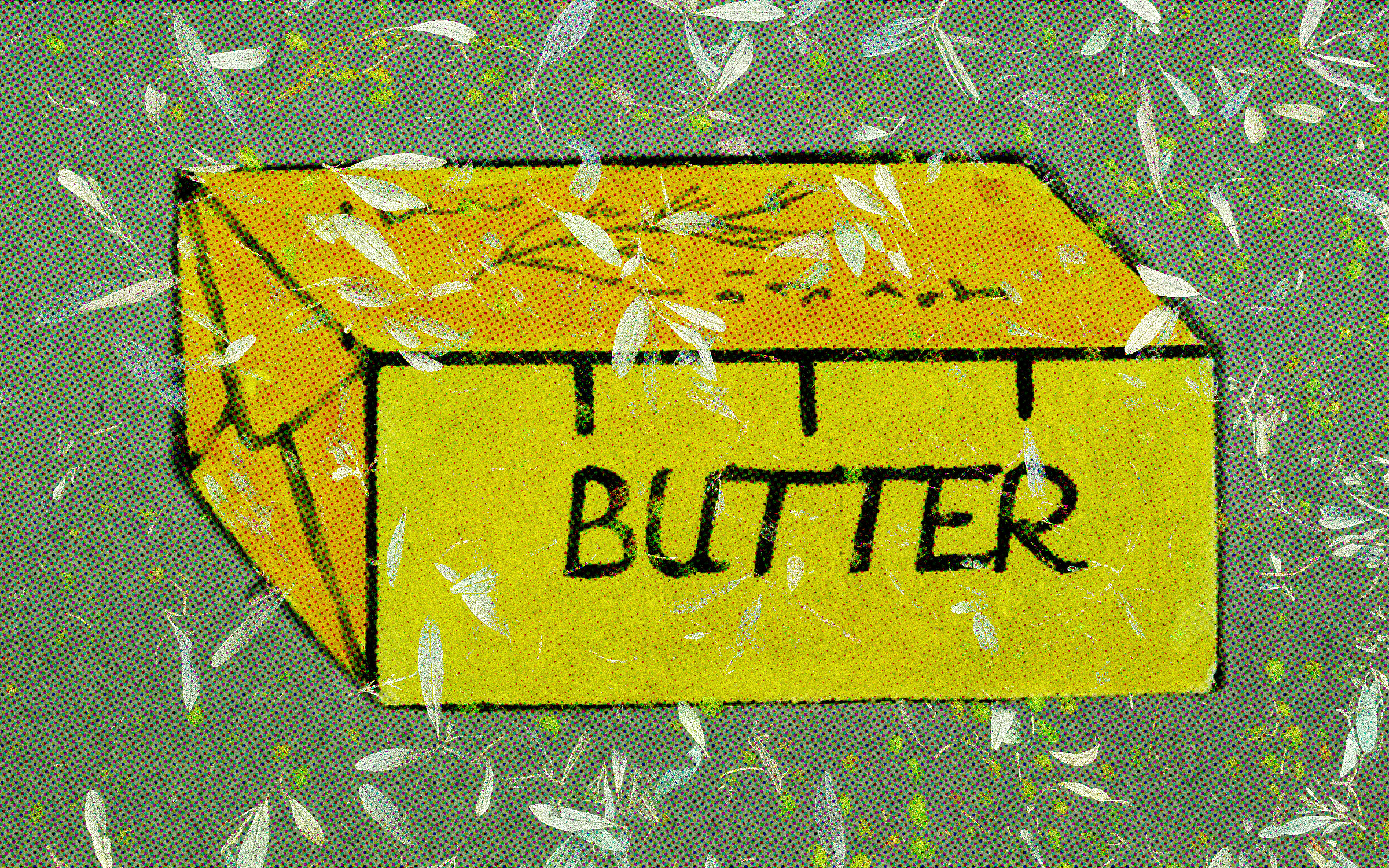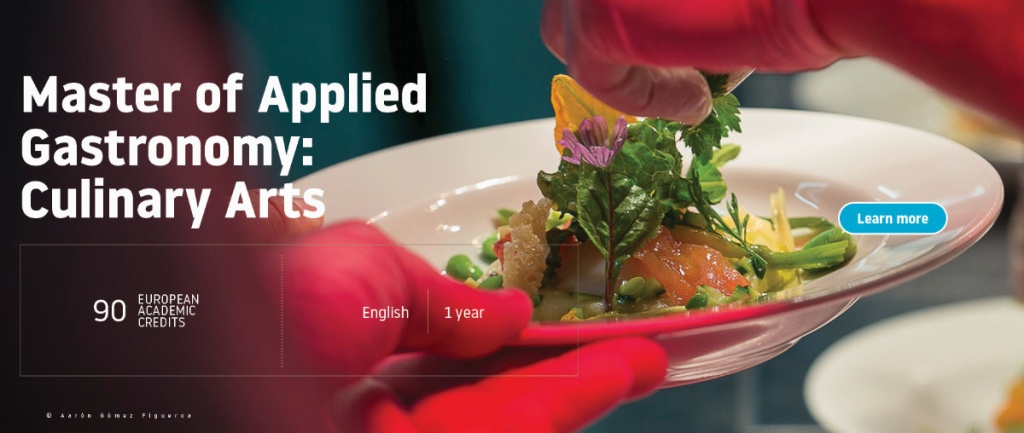The New Gastronome
The Invisibile Divide
Butter vs. Olive Oil
by Carlotta Panza
by Carlotta Panza

Separated by historical and geographical factors, an invisible line has been splitting Italy into two parts for centuries. A line, which divides areas of the country that prefer the use of butter over olive oil and ones where the opposite is the case.
These two fats are the elementary components of Italian cuisine – I dare you to find a traditional recipe that doesn’t include one or the other – and, though they have completely opposing organoleptic features and functions, they are used for very similar purposes: from the beginning of a recipe, as a soffritto, to the end of a recipe, as a raw condiment. Wherever they are used, they have the power of transforming any dish into a delicious feast, amplifying its textures and flavours.
Lard
Before exploring the traditional use of our two primary fats, we have to take a moment to acknowledge the existence of a third one, which used to be a vital component of Italian cuisine but has since lost its relevance: lard. Up until olive oil became the predominant cooking fat, lard was considered a staple ingredient. In modern-day Italy, there are only two regions that still use lard as the starting point for most of their traditional dishes: Emilia-Romagna and Le Marche, whose cuisines are heavily reliant on soft kinds of bread which are fried or cooked over a fire, such as gnocco fritto, piadine or crescione.
“Aside from the meat, which was often aged and preserved in salt, lard was one of the most precious parts: rich as butter, greasy as olive oil but stable without processing or low temperatures.”
Lard was readily available, making its use widespread. Pigs had become domesticated animals around 8500 BC, meaning that families could feed off one animal for a long time, using as much of it as possible. Aside from the meat, which was often aged and preserved in salt, lard was one of the most precious parts: rich as butter, greasy as olive oil but stable without processing or low temperatures. However, once industrialisation lowered the price of olive oil, more and more chefs and home cooks started to include it in their dishes instead of lard. A second reason tied to olive oil’s success were gastronomic traditions linked to religion, which shaped the development of national cuisine throughout the country.
In Italy, meat consumption was forbidden during Lent, so people reached for fish and vegetables instead. To prepare these foods, they began using olive oil since it was the only fat not sourced from animals. Thus, olive oil became more widespread until it was a true staple ingredient, preferred over lard due to being lighter and healthier.
Olive Oil
Let’s take a closer look at Italy’s liquid gold, one of the essential commodities the country exports and a product capable of expressing itself in extraordinarily diverse ways from village to province to region.
Olive oil is the base ingredient of the Mediterranean diet, used as a raw condiment in some regions, to fry vegetables and meat in other areas and to preserve fresh produce throughout the whole country. As it doesn’t need to be fermented or cooked, it takes relatively little effort and time to produce olive oil: a large stone to grind the olives and a container to store the oil are sufficient.
Olive trees have existed for the last 500 thousand years, thriving on copious amounts of sun and surviving even in the aridest of regions. While excavations in Southern France, the Pyrenees and Germany found olive pits dating back to palaeolithic settlements, oil’s culinary use is a more recent practice. Ancient Egyptians used it to mummify bodies by virtue of the liquid’s excellent preservational qualities or for medicinal purposes. Later on, olive oil was adopted as a cosmetic product and, briefly, used to produce light, although it was soon replaced by fats with a higher smoke point, which were better suited for the job. The Etruscans are credited with diffusing the use of oil, as a luxury good, to the wealthiest members of society throughout the Italian peninsula. Finally, during the rule of Ancient Rome, olive oil became a staple ingredient in the kitchen, used to add flavour and fat to dishes such as polenta, vegetables and cereals.
A. D. V. E. R. T. I. S. I. N. G.
A few centuries later, a divide was starting to form. Arab-Muslim reigns in the south, and Christian reigns in the north divided Italy, a split fuelled by their polar opposite religious beliefs and food practices. Only one element united them: a deep-rooted culture of using olive oil. However, their usage of the fat was radically different and deeply tied to the two civilisations’ conflicting tastes, one preferring fried foods, and the other healthier recipes with raw ingredients. This period defined the contrasting use of olive oil between the North and South – passed down through generations and still evident today. Fried fish, seafood, polpette, melanzane and any other vegetable you can think of are consumed in the South of Italy, whereas Northern Italian recipes use olive oil as a condiment on salads or as a way of ending a dish of pasta.
“Finally, during the rule of Ancient Rome, olive oil became a staple ingredient in the kitchen, used to add flavour and fat to dishes such as polenta, vegetables and cereals.”
Olive oil consumption proliferated in Southern Italian regions and in central, hilly areas such as Umbria, Lazio and Tuscany, where olive-tree cultivation thrives. Only one area in the North of Italy has a traditional cuisine based around olive oil instead of butter: Liguria. It is both coastal and hilly, providing the perfect environment for the tree’s growth.
Piemonte’s proximity to Liguria makes it the only region in Italy that uses both olive oil and butter in its traditional cuisine. Although the regional cuisine used nut oils such as olio di noce for centuries, olive oil now plays a vital role in Piemonte’s sauces: making bagna caoda without immersing the anchovies in olive oil until they melt, simply wouldn’t be the same, nor the bright green bagnet verd, used to accompany delicate lingua and bollito misto dishes. Liguria’s traditional recipes use olive oil in a very similar manner, further highlighting its influence on Piemonte’s gastronomy.
In the other Northern regions, olive oil is scarcely present in traditional recipes. It is simply used as a condiment to season the final dish, a crudo, rather than an integral part.
Butter
Finally, we have butter. Capable of turning dough into the flakiest and most delicious croissants, the fat became popular as a culinary ingredient at the end of the Middle Ages. Prior to its widespread usage in the kitchen, butter was used in Northern European communities, especially in the North of England and Scotland, to light lamps or to protect wooden ships’ hulls from seawater. Similarly to olive oil, it was used as a cosmetic product for centuries, with some communities even using it to bathe. In contrast, Ancient Romans used it to style their hair, and other historical populations used it to cure eye and skin diseases. The division between the use of butter and olive oil was driven by the Ancient Romans, who were in constant conflict with northern populations. They regarded them as barbarians and shunned everything they consumed – including butter.
Until industrial machines, able to reproduce the centrifugal force necessary to churn butter, were created, butter was reserved for the Northern Italian elite. The 15°C temperature required for butter’s production and the natural, cool storage temperatures were more readily available in Northern regions. The invention of refrigerators in the 20th century made butter more accessible to the rest of Italy, switching it from a luxury good to a normal one.
“Pellegrino Artusi is credited with being the first person to include recipes from every Italian regional cuisine in one book, La Scienza in Cucina e L’arte di Mangiare Bene, published in 1891, and – intentionally or not – defined the staple dishes of each region.”
Although all of Italy has had easy access to fresh butter and high-quality olive oil for decades, the division in usage is still evident. Thus, the different uses are not linked to accessibility but tradition, a concept with a firm hold in Italy. Modernising Italian cuisine is challenging due to its deep-rooted origins, dating back to the 19th and 20th centuries, and people’s strong commitment to continuing tradition.
Pellegrino Artusi is credited with being the first person to include recipes from every Italian regional cuisine in one book, La Scienza in Cucina e L’arte di Mangiare Bene, published in 1891, and – intentionally or not – defined the staple dishes of each region. Flicking through Anna Gosetti della Salda’s 1967 book Le Ricette Regionali Italiane, one notices how traditional recipes have barely changed since Artusi’s book and how olive oil continues to be absent from recipes from Lombardia, Valle d’Aosta, Emilia Romagna, Friuli-Venezia Giulia, Trentino Alto Adige and Veneto.
Ancient populations, religion, geography, climate and gastronomers have contributed to tracing the invisible line that divides Italy in half. First, the barrier was set by climatic conditions and geographical locations, then by religious beliefs, political allegiances and social hierarchies. These factors shaped what, eventually, were labelled traditional regional cuisines, which have barely changed in the past 150 years.